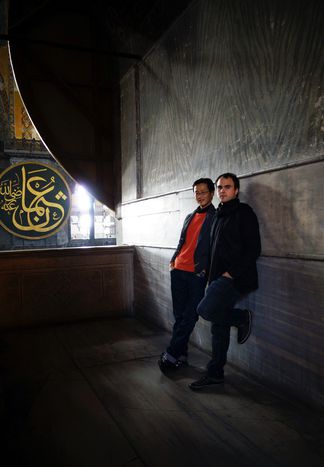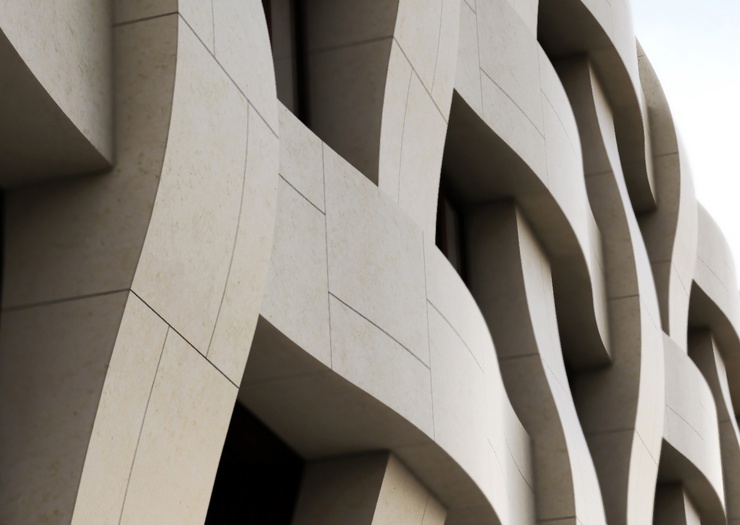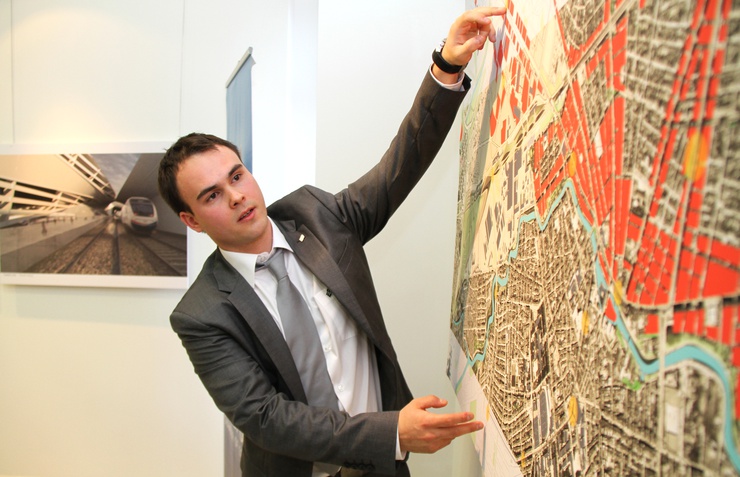
Burak Pekoglu: 'Buildings made with love and passion will always stand out'
Published on
The US-based Turkish architect shared his experiences on design and architecture with students at the groundbreaking Connect-Collaborate-Create seminar in Istanbul, in November 2012
cafebabel.com: Burak, you mention the importance of thinking out of the box in architecture as a transformative power in cities.
Burak Pekoglu: Cities are extensions of our bodies that are born, live, grow, multiply and die. Each city has its own soul that connects to ours. Some we love, some not. Our senses direct us to distinguish tastes that we remember in each city, by actually being there. Architecture is an integral part of this experience. An extraordinary project has the motive to inspire us in its everyday presence. Buildings made with love and passion will always stand out and reach our hearts in each city we associate ourselves with. Their endurance in time will form a dialogue with its context in which transformation takes place.

The presentation as part of the seminar covered the highlights of my recent project Weave in Bursa, Turkey; regarding process, fabrication and collaboration. The site is located in the midst of an under-developed part of Bursa. The semi-industrial area is filled with textile businesses. This gave the opportunity to express the concept of weaving as a visual metaphor. A concrete frame is dressed with a weaving stone facade. This would communicate the clients’ branding through the façade design; while at the same time it aims to bring a unique identity to the area as a prominent textile center.
cafebabel.com: There is a constant theme in your work. For example, you conceive everyday spatial experience as a bridge between art and people.
Burak Pekoglu: Art and design naturally has become complimentary to each other over the years of my personal recollections and experiments. The most exciting moments are the ones when you are able to communicate even a pixel of your imagination. Once that interaction grows in time the resolution of the shared imagination becomes clearer, from which the collaboration might derive the creation. Especially in the practice of architecture, it is possible to curate fields of art and design as one; where art is personal, fluid and timeless, and design is structured, measured and cares to expand broadly. Then, each custom project becomes a new opportunity to evoke people’s senses through injecting a unique encounter in their course of everyday spatial experiences.
cafebabel.com: What about the role of craft and process in your work?
Burak Pekoglu: Every design process can be seen as a new possibility to discover textures, fabrics, cultures, techniques and people. The question is, how to compose your findings into innovative applications. Today it’s possible to reinvent local attributes and craftsmanship through technology and global thinking. Yet, for me, the most important thing is to make the teams believe in the design where their efforts will fall in right place when the intention is conceived.
cafebabel.com: But it must be difficult when old habits of craft clash with new design techniques.
Burak Pekoglu: Yes. In the Bursa project, from conception to realisation, the core challenge was the collaboration. Actors from very distinct backgrounds gathered under the parallels of research, design and execution. Throughout the project these parallels are interwoven where constant feedback between local parties and techniques helped improve design and its execution. The overall project is designed in Istanbul and New York and remotely monitored during its execution. Steel contractors from a Black Sea town manufactured the steel on site, while marble masons in Central Anatolia fabricated the complex series of stone types. Then a team of stone installers from Eastern Anatolia camped on site to assemble the complex geometry of weaving façade.
cafebabel.com: Can architecture solve the problem of inequality in terms of development in different cities of a country? How do you approach this?
Burak Pekoglu: In my book Crossways Anatolia: Eskisehir I looked at infrastructure’s impact in the Hinterland of Turkey by taking the city of Eskisehir as a regional model in between the two polar cities, Istanbul and Ankara. In this context, Eurasian railroad development will become a new potential to strategically approach, not just Eskisehir, but all the Anatolian cities that fall in the line of this paradigm of future physical network.

The utopic approach is to re-imagine the hinterland cities becoming new centers of cultures and industries that are fully integrated with the new infrastructure of speed-rails. Under this aspect, new architectures can be inserted to these cities while preserving their existing qualities. Unique geography and history of Anatolia as a bridge between Asia and Europe can be re-amplified with this utopic design project, while relieving the stress out of Istanbul and carefully spreading it inwards to the Hinterland, where the silk road was once real.
Images: © CE



